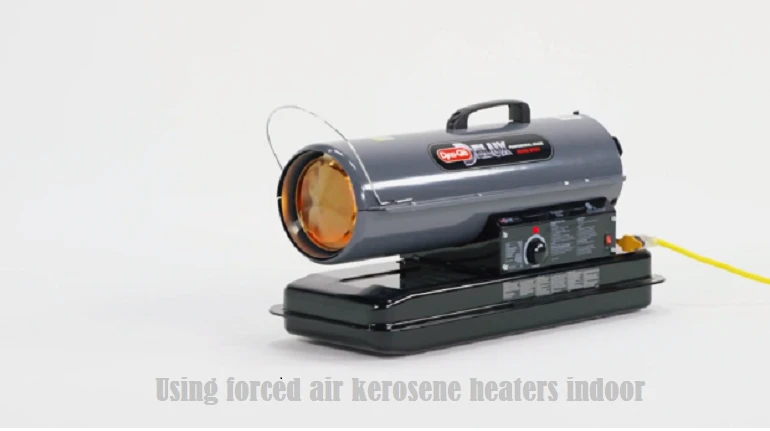Forced air kerosene heaters can be safe for indoor use if they are used in well-ventilated areas. It is essential to ensure adequate airflow to prevent oxygen depletion.
Kerosene heaters are a popular choice for supplemental heating, especially in areas where electricity is unreliable or too costly. These heaters are designed to be used indoors with certain precautions. The primary concern with indoor use of kerosene heaters is ventilation. A well-ventilated space is key to safe operation, as it helps to maintain air quality and prevents the build-up of harmful fumes.
In smaller rooms or spaces lacking proper ventilation, the use of these heaters can lead to a significant decrease in oxygen levels, which poses a risk of carbon monoxide poisoning. It is vital to follow the guidelines provided by the heater’s manual, which typically includes keeping doors ajar or windows slightly open to facilitate the exchange of indoor and outdoor air. Regular maintenance is also critical to ensure the heater’s proper functioning and to minimize the release of fumes.
Safety features are often built into modern kerosene heaters to reduce risks. These include automatic shut-off mechanisms that activate if the heater is tipped over or if oxygen levels in the room fall below a safe threshold.
Despite these features, it is always recommended to have a carbon monoxide detector in any room where a kerosene heater is used. This provides an additional layer of safety, alerting occupants to dangerous conditions that could lead to health hazards.
Related: 4 Best Forced Air Kerosene Heaters Review
Forced Air Kerosene Heater Mechanics
Forced air kerosene heaters operate by drawing kerosene from a tank and moving it to a combustion chamber where it is ignited. A fan then propels the warm air out into the room, providing a quick and efficient source of heat.
The efficiency of these heaters lies in their ability to rapidly heat an area due to the forced-air mechanism. They are equipped with a thermostat that allows users to set and maintain a desired temperature. The heaters are also portable, making them a versatile option for heating various spaces as needed.
Safety features are integral to the design of these heaters. Many models include an oxygen depletion sensor that automatically shuts off the unit if oxygen levels in the room fall too low.
Tip-over switches that turn the heater off if it is knocked over are also common. It is essential to follow all operational guidelines, such as providing adequate ventilation and regular maintenance, to ensure the heater functions safely and effectively.
Value of Forced Air Kerosene Heaters
Comparing forced air kerosene heaters to other heating options, their value becomes apparent in certain situations. These heaters are particularly effective in environments where electricity is not available or is too expensive to use for heating purposes. They are known for their rapid heating capability, making them ideal for quickly warming up large spaces like workshops or garages.
The cost of kerosene can be a factor to consider, but these heaters are often more energy-efficient than electric heaters, translating to lower operating costs over time.
The portability of forced air kerosene heaters is another advantage, allowing them to be moved to where heat is needed most. This flexibility can lead to more efficient use of heat and energy savings, as only the occupied spaces are heated.
Optimal Uses for Forced Air Kerosene Heaters
Emergency Heat Source: In power outages or situations where traditional heating methods fail, these heaters can provide essential warmth.
Construction Sites: They offer a robust heating solution for spaces without permanent heating installations.
Outdoor Events: For events held in tents or open-air venues, these heaters can deliver comfortable temperatures for guests.
Workshops and Garages: They excel in heating spaces that are not connected to central heating systems.
Agricultural Settings: They can be used to protect plants and animals from cold temperatures in barns and greenhouses.

Indoor Use of Forced Air Kerosene Heaters: Pros and Cons
Pros:
- Rapid heating of spaces
- Portability allows for targeted heating
- Often more cost-effective than electric heaters
- Can operate without electricity
Cons:
- Requires good ventilation to prevent oxygen depletion
- Kerosene storage and handling require care
- Regular maintenance is necessary for safe operation
- Risk of carbon monoxide exposure if not used correctly